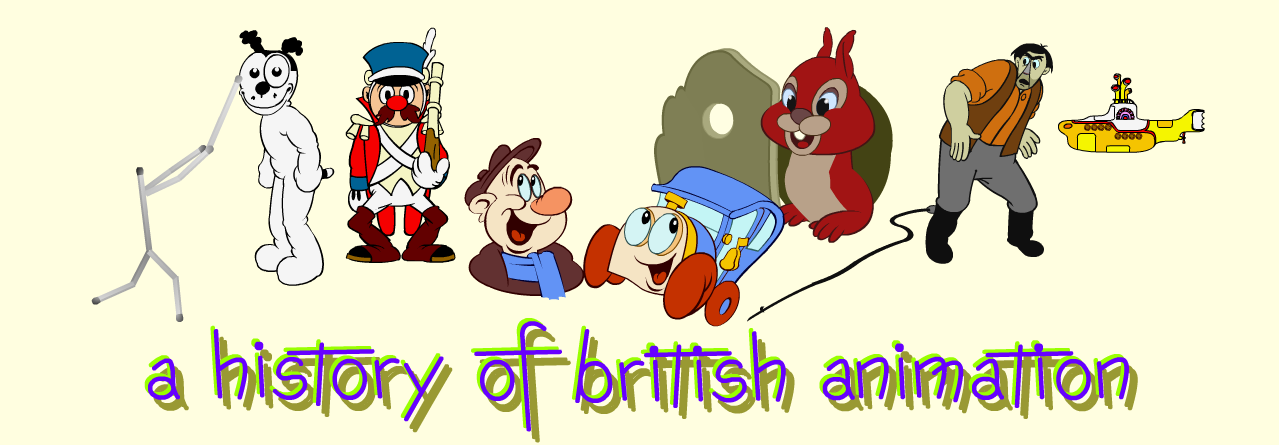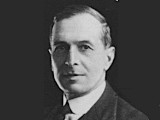

|
 | J A Shepherd(1866–1946) |  |
||
|
William James Affleck Shepherd was born on 29 November 1866 in Pimlico, SW London, the son of William Shepherd, a shipping agent, and his wife Lydia. James was good at drawing from an early age. At seventeen he was apprenticed to the caricaturist Alfred Bryan (real name Charles Grineau), whose work appeared in The Entr'acte, The World and The Illustrated Sporting and Dramatic News and who drew a weekly multi-page section entitled Days with Celebrities for the satirical magazine Moonshine. After three years working for Bryan, Shepherd began submitting his own work to various journals. In 1892 he began illustrating the feature Zig Zags at the Zoo, a humorous look at the various denizens of London Zoo with text by Arthur Morrison, for The Strand Magazine. Shepherd's perceptive and engaging animal studies were well received and the feature ran monthly until 1894, and was then published in book form. According to a Strand article of 1895 the feature rapidly established his reputation: Offers of work came rolling in, until, in July, 1893, he was invited to draw for Punch. [....] He is a marvellously rapid worker, and at his charming cottage at Bromley, Kent, has a perfect menagerie in minature. In his kennels are to be found half-a-dozen bulldogs, in the breeding of which he has been particularly successful. Mr Shepard is in fact attached to all field sports, and considers the outdoor life he leads preferable to all others. The article goes on to mention his intelligent raven, Elijah and ends with the quote: "There are only two things I love in this world—my mother and my raven." This soon changed. In 1897 Shepherd married Nellie Gertrude Turner, daughter of a retired brush manufacturer whose investment in the Nugget Polish Company had made him independently wealthy. The same year he illustrated some of Aesop's fables in full colour as a children's picture book, published as Zig Zag Fables, leading to further book illustration offers. He illustrated a British edition of Uncle Remus stories by Joel Chandler Harris, published in 1901. This was popular enough for the publishers to commission him to illustrate a second collection, Nights with Uncle Remus, published in 1907. James and Nellie had three children, a daughter and two sons, and moved to Stanhill Cottage, Charlswood, near Reigate, Surrey. From January to December 1902 The Strand Magazine ran a series of natural history articles by E D Cuming entitled The Arcadian Year, which Shepherd illustrated and which was published in book form in 1903. In 1908 he illustrated a childrens' book by Cuming called Three Jovial Puppies and in 1913 he illustrated The Story of Chanticleer. The Shepherds' daughter, Barbara, married solicitor Stuart Sheppard in 1922 and their son David Stuart Sheppard was the celebrated cricketer and Bishop of Liverpool. The Shepherds' elder son, George, qualified as a doctor at Charing Cross Hospital in 1926. Shepherd illustrated a new edition of Wallter De la Mare's The Three Mulla-Mulgars — the magical tale of three royal monkeys and their quest to find the hidden valley of their clan — published in 1924, and throughout 1925 he drew a weekly full-page comic strip for The Illustrated London News entitled Blinx and Bunda at the Zoo, in which an escaped monkey and a stray cat wander among the exhibits. These were published in book form the following year as A Frolic Round The Zoo. James, Nellie and their younger son William relocated to Cliffdene House, in the Gloucester village of Rencomb, near Cirecester in 1934. They later moved to nearby Woodmancote Manor, and William took up farming. James Affleck Shepherd died on 11 May 1946. AnimationShepherd had become involved with animation in 1919 when Kine Komedy Kartoons bought the rights to make animated films of the illustrations from Zig Zags at the Zoo. Three were made as part of a package of cartoons for release by Phillips Film Co and animated by E H Mills. Shepherd's illustrations would seem to cry out for animated movement. There are no published reviews of these films as they were not completed when the series was being promoted — or perhaps not of sufficient quality to preview. An item in the Sunday newspaper the Weekly Dispatch (21 August 1919) cites the scope for improvement in animated drawings and reports: J. A. Shepherd, famous for his animal drawings in the Strand Magazine and in Punch, is now associated with Kine Komedy Kartoons, a firm which specialises in this class of work, and he is gathering round him many well-known black and white artists. Kine Komedy Kartoons was close to collapse and this article would seem to be a last ditch attempt to boost the project in the hope of securing further investment. "Black and white artists" are those who produce line-drawings in indian ink for reproduction in monochrome publications such as newspapers and magazines, as well as book illustration. I am unsure what Shepherd means when he says the first two films where "done from models" — possibly he is referring to the animation of articulated cut-outs, linked by thread at the joints to form two-dimensional puppets. The New Keeper's Dream, the title given in the article for the third Zig Zags cartoon, was a 20-panel cartoon sequence published in The Strand Magazine in July 1916 and depicting the escalating persecution of a new keeper by the denizens of the zoo. Even as cut-out animation it ought to have made an amusing film. The lack of a review suggests it was not completed in time for the trade shows promoting the Philips Philm Phables and once Kine Komedy Kartoons collapsed there was no financial reason for further mention in the press. The mention of H M Bateman — indeed the article is headed 'H M BATEMAN AS "MOVIE" ARTIST' — is interesting. Although best known for his series of The Man Who... cartoons, depicting the shocked reactions to the perpetrator of a social solecism, Bateman was a great fan of strip cartoons and produced several sequences of 20-24 drawings for Punch and Tatler, where they ran to three or four pages. There is no record of the boxing film mentioned — it may be that what Bateman had produced was just a cartoon strip 'storyboard' for a film. It seems to me that Frank Zeitlin, Kine Komedy Kartoons's producer, was encouraging Shepherd to become the organiser of a new team of artists to replace the likes of decamping artists Anson Dyer and Victor Hicks and who would create films using the "American method" — sequential drawings rather than the cut-out animation which had been the British norm — doubtless with the assistance of less celebrated practicing animators. The collapse of Kine Komedy Kartoons ended Shepherd's involvement with animation. While Shepherd's involvement with animation was only brief, his illustration work was influential in the field. Zig Zags at the Zoo is specifically about the indiviual personalities of the creatures on display at London Zoo and Shepherd's illustrations explore the parallels between animal and human characteristics in expression, posture and movement. He was adept at depicting animals in human poses and his later work, reflecting the influence of Japanese prints on western art, delineated complex animal forms with a deceptive simplicity. It is very likely that the animation potential of Shepherd's drawings was spotted by the Disney studio in the early 1930s, joining the growing library of inspirational material available to animators and storymen. In his biography of Shepherd's grandson, David Sheppard - Batting for the Poor, Andrew Bradstock reports the family history that James had been invited by Walt Disney to come and work for him in California but declined the offer. |
Filmography | ||||
| Zig-Zags at the Zoo No.1 | (Kine Komedy Kartoons 1919) Original illustrations | |||
| Zig-Zags at the Zoo No.2 | (Kine Komedy Kartoons 1919) Original illustrations | |||
| Zig-Zags at the Zoo No.3 | (Kine Komedy Kartoons 1919) Original illustrations | |||
Links to Other Sites | ||||
Project Gutenberg of Australia: Zig-Zags at the Zoo: Online version of the book [NB: In The Strand Magazine the text and illustrations were more tightly integrated]. VictorianVoices.net: Articles/Strand/ZigZags: Scans of the original Strand Magazine articles. University of Florida: Zig Zag Fables: Scans of the book by James Affleck Shepherd retelling some of Aesop's stories and published by Gardner, Darton & Co., London, in 1897 [note that there is no type-setting — Shepherd drew and hand-lettered every single page]. VictorianVoices.net: Artists of "The Strand Magazine.": Scan of an article from The Strand Magazine 1895 giving potted biographies of various contributing artist including James Affleck Shepherd. Internet Archive: The Strand Magazine 1916b Vol. LII, Jul-Dec: Scan of "The New Keeper's Dream", a 20-panel cartoon by J A Shepherd, from The Strand Magazine July 1916. |
Peter Hale
Last updated 2021
|